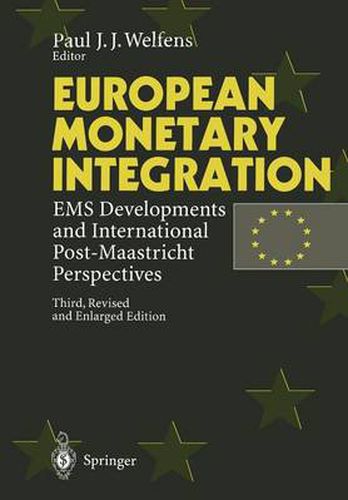Readings Newsletter
Become a Readings Member to make your shopping experience even easier.
Sign in or sign up for free!
You’re not far away from qualifying for FREE standard shipping within Australia
You’ve qualified for FREE standard shipping within Australia
The cart is loading…






This title is printed to order. This book may have been self-published. If so, we cannot guarantee the quality of the content. In the main most books will have gone through the editing process however some may not. We therefore suggest that you be aware of this before ordering this book. If in doubt check either the author or publisher’s details as we are unable to accept any returns unless they are faulty. Please contact us if you have any questions.
EU monetary integration was reinforced in the 1980s when macroeconomic convergence and a dominant role of the German Bundesbank created the basis for relatively stable exchange rates and increasing EU trade volumes. The analysis here focuses on the EMS crisis of 1992/93, the topic of optimum currency areas and the problem of fiscal policies and regional stabilization in Europe, the US and Canada. This book gives an assessment of the EMS developments and shows how financial market liberalization as well as the EU single market project affect the process of economic and monetary union. The role of currency substitution and problems of the Bundesbank’s monetary policy control in a changing international system are evaluated.
$9.00 standard shipping within Australia
FREE standard shipping within Australia for orders over $100.00
Express & International shipping calculated at checkout
This title is printed to order. This book may have been self-published. If so, we cannot guarantee the quality of the content. In the main most books will have gone through the editing process however some may not. We therefore suggest that you be aware of this before ordering this book. If in doubt check either the author or publisher’s details as we are unable to accept any returns unless they are faulty. Please contact us if you have any questions.
EU monetary integration was reinforced in the 1980s when macroeconomic convergence and a dominant role of the German Bundesbank created the basis for relatively stable exchange rates and increasing EU trade volumes. The analysis here focuses on the EMS crisis of 1992/93, the topic of optimum currency areas and the problem of fiscal policies and regional stabilization in Europe, the US and Canada. This book gives an assessment of the EMS developments and shows how financial market liberalization as well as the EU single market project affect the process of economic and monetary union. The role of currency substitution and problems of the Bundesbank’s monetary policy control in a changing international system are evaluated.